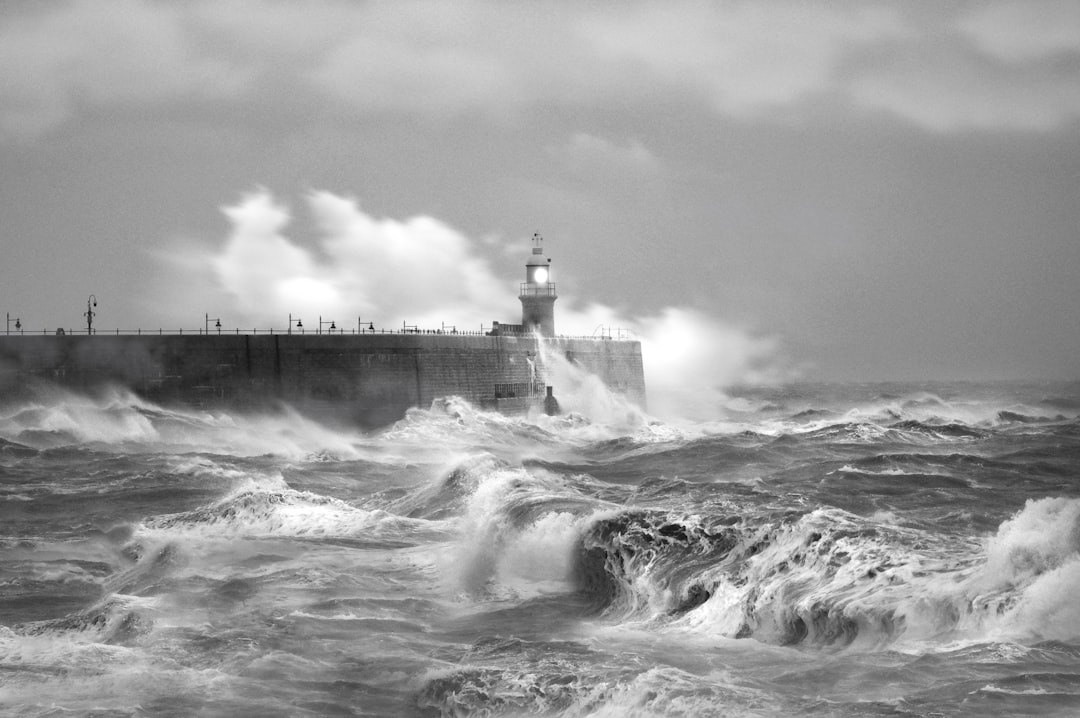Hurricane Milton Arrives in South Florida With Rough Surf, Wind: Here’s What It Looks Like

By Boca Vibe
Hurricane Milton Arrives in South Florida With Rough Surf, Wind: Here’s What It Looks Like
Spared a direct hit from a storm of historical proportions, South Florida began experiencing the effects of Hurricane Milton on Wednesday, with the storm whipping up waves, stirring up wind and creating strong currents at inlets and waterways. The storm was poised to make landfall in the Bradenton area the evening of October 9, bringing with it a potent mix of torrential rain, damaging winds, and a significant storm surge.
Boca Raton Feels Milton’s Outer Bands

While Boca Raton residents avoided the worst of Hurricane Milton’s fury, the city still felt the impact of the storm’s outer bands. Throughout the day, wind gusts reached up to 40 miles per hour, causing minor tree damage and power outages in scattered areas. The usually calm waters off the coast were transformed into a churning expanse of whitecaps, with waves crashing against the shoreline with considerable force. Beachgoers were advised to stay away from the water due to the dangerous rip currents and high surf. The iconic Mizner Park fountain, typically a centerpiece of calm beauty, was noticeably buffeted by the wind.
Impacts on Local Businesses and Residents
Many businesses in Boca Raton chose to close early on Wednesday as the storm intensified. Restaurants and shops along Palmetto Park Road reported slower than usual business, with the adverse weather conditions deterring customers. Reports of downed power lines were handled swiftly by Florida Power & Light (FPL), but some residents in the western parts of the city experienced temporary outages. The Palm Beach County Emergency Operations Center remained active, monitoring the situation and providing updates to residents.
Florida Atlantic University (FAU) in Boca Raton canceled all evening classes and activities as a precautionary measure, urging students to remain indoors and monitor weather reports. The university’s emergency response team was on standby, ready to assist students and staff if needed. The FAU campus, normally bustling with activity, displayed a quieter demeanor as the storm’s impact became more noticeable.
Coastal Erosion Concerns
The powerful waves generated by Hurricane Milton raised concerns about coastal erosion, particularly in areas with already vulnerable shorelines. Palm Beach County officials were monitoring erosion patterns closely, bracing for potential damage to beaches and coastal infrastructure. The high tides accompanying the storm further exacerbated the risk of erosion and flooding in low-lying areas.
Preparing for the Aftermath
Even though Boca Raton was spared the brunt of the storm, preparations for potential post-storm issues were underway. Emergency services were on high alert, and local authorities encouraged residents to remain vigilant and report any storm-related damage or emergencies promptly. Cleanup crews were prepared to address any debris or downed trees once the storm passed.
The Palm Beach County Sheriff’s Office increased patrols and urged drivers to exercise caution due to potential flooding and reduced visibility. They also reminded residents to avoid driving through flooded areas, as even shallow water can conceal unseen hazards.
The Storm’s Trajectory and Expected Impacts
Hurricane Milton, initially a Category 3 hurricane, weakened slightly as it approached the Florida coast, but it still maintained significant strength. The National Hurricane Center projected that the storm would make landfall in the Bradenton area with sustained winds of around 100 mph, accompanied by a substantial storm surge. Areas further north along the Gulf Coast were expected to experience heavy rainfall and strong winds. The storm’s projected path also brought the possibility of tornadoes, though the likelihood was considered less significant for South Florida.
Rainfall and Flooding
While Boca Raton was unlikely to experience the intense rainfall expected in areas closer to the storm’s landfall, significant rainfall was still possible. The county’s drainage systems were prepared for the increased water volume, but residents in low-lying areas were advised to remain aware of potential flooding. Many residents reported significant rainfall accumulation throughout Wednesday afternoon, with accumulation expected to continue overnight.
Local officials emphasized the importance of heeding weather warnings and staying informed throughout the storm’s duration. They urged residents to stay indoors, avoid unnecessary travel, and have emergency supplies on hand.
Community Response and Resilience
The spirit of community resilience shone through as residents prepared for the storm’s effects. Social media was abuzz with neighbors sharing advice, updates, and offering support. Grocery stores experienced a surge in shoppers stocking up on essential supplies, and community centers opened their doors to residents seeking shelter. The collective preparedness demonstrated by the Boca Raton community showed a strong sense of community and readiness in the face of adversity.
Despite the challenges presented by Hurricane Milton, Boca Raton, like much of South Florida, showed its capacity to navigate challenging weather conditions. The experience served as a reminder of the importance of preparedness and the strength of community bonds in times of adversity. The city’s swift response and community cooperation ensured a relatively smooth passage through the storm’s outer bands.
Frequently Asked Questions (FAQ)
Q: Where can I find reliable information about the storm? A: The National Hurricane Center’s website (nhc.noaa.gov) is the primary source for official updates. Palm Beach County’s emergency management website and social media pages provide local information and advisories. Local news channels also provide live coverage and updates. Q: What should I do if I see flooding in my area? A: Avoid driving or walking through flooded areas. The water may be deeper than it appears and could contain hidden hazards. Report any significant flooding to local emergency services. If flooding threatens your home, take necessary precautions to protect your property and consider evacuating if instructed to do so by authorities. Want more Boca updates?
Subscribe to our newsletter and never miss local news.Frequently Asked Questions
Related Articles